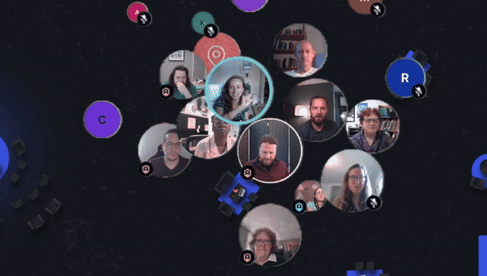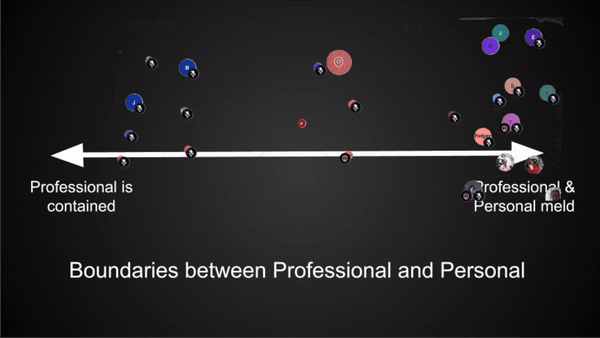What lies beyond webinars? Networking!
Another virtual conference? Ugh!
I think we can all agree that most of the virtual conferences held during the pandemic were…less than ideal. I’ve spoken to tons of people about why those conferences weren’t good, and one of the most common responses is that people couldn’t connect with their colleagues. There were no hallway conversations, no shared coffee breaks or meals, no entertainment events. In short, there was little to no networking. (And when people tell me about the networking events that they attended, they usually describe the events as awkward and stilted.)
The cure: Networking opportunities
One of the problems with typical virtual conferencing platforms is that you can’t choose who to talk with. You’re stuck in a big virtual room or a smaller breakout room that the host put you in. You can’t sidle up next to someone you know and start a conversation. (Some platforms allow you to send a private chat message, but that’s hardly the same as having a conversation.) In short, you lack agency.
Enter “spatial conferencing” platforms
A group talking during a conference Coffee Break in the SpatialChat platform.
Spatial conferencing platforms like SpatialChat allow you to move yourself around, and you only see and hear the people who are near you. You can join and leave group conversations, have a one-on-one with a trusted colleague, or introduce people to each other. You’re in control of your own experience, and you are free to be a social butterfly.
Designing great networking
Spatial platforms are powerful tools for creating comfortable, engaging networking events. How about starting conversations with a “spatial icebreaker” that asks people to move themselves around the room? For example, a facilitator might ask a question that is part personal and part professional like, “Do you tend to keep a strong boundary between your work life and home life, do you tend to blend the two parts of your life, or something in between?” After everyone puts themselves where they want on a line, the facilitator asks someone from each end of the spectrum, and from the middle, to talk about their work/life boundary and how it functions for them. Then everyone can mingle around and chat about it in small groups of their own choosing.
A spatial icebreaker where people move themselves on a continuum in response to a question.
Josh Gutwill and Sue Allen are Co-Directors of the Clean Conferencing Institute. At the Institute, we’re working with platforms like SpatialChat to develop and test activities that effectively help people mix and mingle. In future posts, we’ll talk about the importance of establishing clear social norms, like how to enter and leave a conversation, to make people more comfortable during networking events.
If you’d like to support us, please consider clicking on the Donate button at the top of the page.

